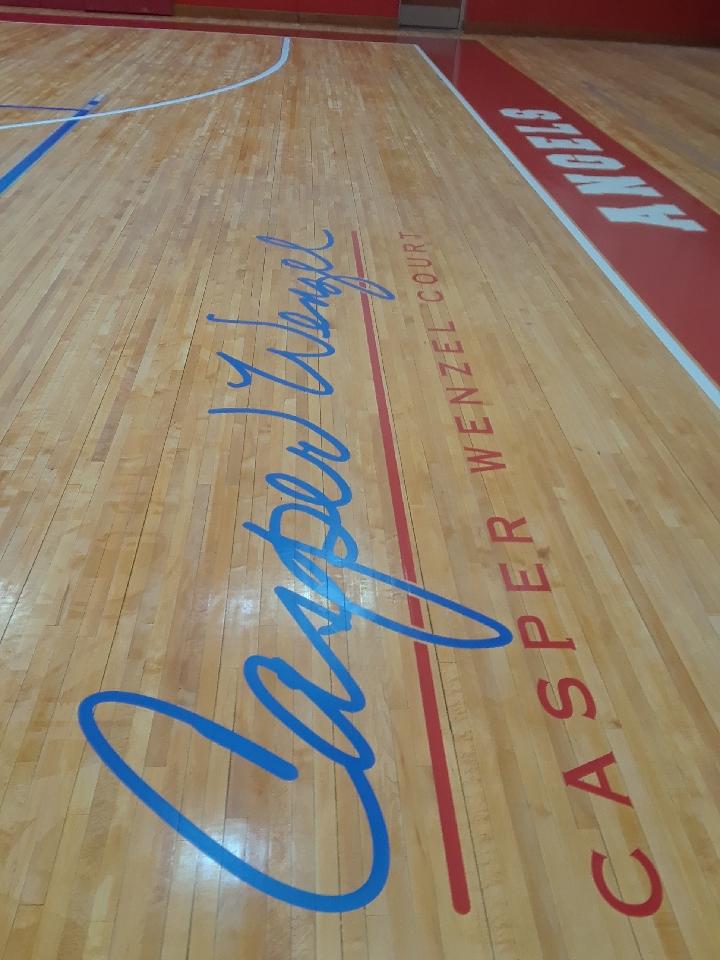Engineered hardwood flooring lends a sense of strength, durability, and beauty to the interiors of many institutions. It has been a popular commercial flooring choice for centuries. With proper care, these floors can last for many years. But even the best-maintained floors can wear down over time and need reconditioning in the form of resealing. Gym floor coatings create a base of protection. The top of that base is what gets the wear and tear. Gouges and scratches caused from moving equipment and other objects such as bleachers, or tables and chairs, as well as regular athletic use, allow the surface to break down, enabling moisture and dirt to get in. After a while floors lose their shininess and stickiness, which makes floors unsafe for athletes. Because of a loss of traction, athletes can slip and fall. Scheduling a yearly resealing is the best way to maintain the beauty and safety of these floors.
There are two types of sealants or coatings to choose from when having floors resealed. There are differences to each, based on content, color, hardness, and application.
Oil-modified polyurethane has been around the longest and is made up of a mix of alkyd resins and plastic (polyurethane). There is 40-45 percent of these solids in oil-based products. This mixture provides a tough, solvent-resistant finish which many people consider to be superior to the newer, water-based finishes. These sealants leave an amber glow. Oil-based polyurethane is easy to apply and requires fewer coats, but there is a longer drying time in between and after the final coat. But because of its higher chemical content and because of increasingly stringent air pollution laws, the coating industry has been pouring their research and development dollars into improving water-based finishes.
Water-based polyurethane provides a clear finish and has a low odor. Most water-based polyurethanes contain only 30 to 35 percent solids mentioned. Since these solids create the protective finish, the application of two coats, as opposed to one coat with oil-based polyurethane is preferred. Some newer water-based products only require one coat. But water-based polyurethane products do have their tradeoffs. They cost twice as much as oil-based polyurethanes and they will not give the wood the rich glow that you get from oil-based polys.

There is debate over which finish is harder. Some experts maintain that hardness is not necessarily a good attribute of a floor finish. You want a finish that will flex along with the floor. And a super-hard finish shows scratches more readily, even though it is more scratch-resistant.
Both water based and oil based polyurethane products offer good protection; the biggest difference is in appearance. If you love the natural look of maple, apply a water-based (waterborne) polyurethane. The solution appears milky in the can, but goes on clear and remain clear. It slightly accents the character of your wood without giving it the amber tint of an oil-based poly. Since water-based finishes dry fast—most within a few hours— several coats can be applied in a day and the room can be used the following day.
The Maple Flooring Manufacturers Association (MFMA) has published specifications for gymnasium sealers and finishes for maple floors (revised 2017) and lists products that conform to such specifications for the sole purpose of providing guidance to achieving the highest protection and most enduring beauty in wood floors.
Of course, there is still no substitute for prolonging the life of any finish than good care in between resealing. To keep your newly sealed floor in great shape for a longer period of time, follow these guidelines for proper floor care:
- Do utilize vacuums and dry or damp mops and cloths when cleaning the floors within your facility to keep the flooring clean and clear of debris. Dirt is the number one enemy of floor finishes.
- Do wipe up all spills on your engineered hardwood flooring as soon as possible to avoid permanent stains and water damage.
- Do place wide mats or rugs by all entrances and high traffic areas to minimize as much tracked in the dirt as possible.
- Do place protective pads under all furniture legs including chairs, tables, couches, desks, filing cabinets, etc. to avoid permanent scratches and scrapes.
- Do not apply other coats of stain/polyurethane finishes on already finished engineered hardwood flooring.
- Do not use any wax-based cleaners or harsh detergents that will dull the finish when cleaning your new hardwood flooring
- Do not use excessive water when cleaning your flooring, Although a polyurethane finish makes floors more resistant to water, it is not waterproof so water can seep into the wood causing damage.

This process is best done by professionals. If you have questions about this process or want to schedule a screen and recoating contact us at Sports Floors, Inc. and we will happy to assist you! More information on maintaining wood floors is available on our care and maintenance page.
